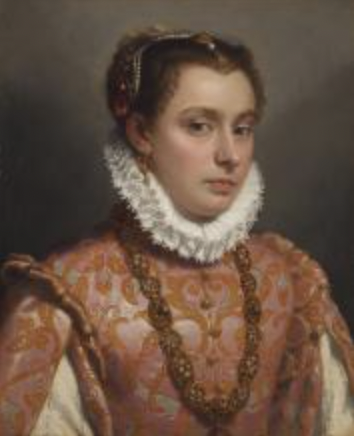
The Frick adds to its collection Giovanni Battista Moroni’s Portrait of a Woman, the most significant Italian Renaissance painting the museum has acquired in more than half a century.
The Frick adds to its collection Giovanni Battista Moroni’s Portrait of a Woman, the most significant Italian Renaissance painting the museum has acquired in more than half a century.
Complementing exceptional portraits by Bronzino, Titian, and others purchased a century ago by the institution’s founder, Henry Clay Frick, this gift from the trust of Assadour O. Tavitian is also the first female portrait to enter the Frick’s holdings of Renaissance painting. It will be on view at Frick Madison beginning January 12.
Comments Ian Wardropper, Anna-Maria and Stephen Kellen Director, “We are deeply honored by the largesse of the late Aso O. Tavitian, who supported the institution in so many meaningful ways. As a Trustee, his leadership was defined by generosity, intelligence, and great kindness. In giving this stunning painting to the Frick, he has added depth to our Renaissance holdings, and we are thrilled to place the work immediately on view for the enjoyment of our visitors. We had the pleasure of getting to know this compelling portrait very well in 2019, when it was one of the highlights of Moroni: The Riches of Renaissance Portraiture, the special exhibition that introduced this artist to American audiences. At that time, the portrait was considered one of the finest by Moroni in private hands. We are thrilled to now include it in our permanent collection, thanks to Aso’s great generosity.”
Adds Curator Aimee Ng, who co-organized the acclaimed 2019 exhibition, “Portrait of a Woman was a star of our Moroni show, holding pride of place at the center of the Frick’s Oval Room. The canvas is a triumph painted at the height of the artist’s career, and its superb quality and condition are perfectly at home among the treasures of the Frick."
Giovanni Battista Moroni (1520/24–1579/80) spent his career painting in and around his native Bergamo, in Lombardy, then part of the Venetian Republic. His portraits are celebrated for the psychological presence and lifelikeness of the sitters, as well as his extreme attention to detail, particularly to his subjects’ clothing and accessories—sumptuous fineries that signal wealth, status, and fashion.
The identity of the woman and the reason Moroni painted her are unknown. Her strong, somewhat confrontational gaze is unconventional in Renaissance portraits of women, which tend to promote a more modest demeanor. Whatever the purpose of the portrait, which probably was painted about 1575, Moroni demonstrates his exceptional skill in depicting the woman’s pink dress brocaded in silver-gilt and silver-wound thread, white neck ruff, and fine jewelry, which also ornaments her hair. Of the roughly one hundred twenty-five portraits by Moroni that are known today, only about fifteen are independent portraits of women, and this is the finest example.
ABOUT ASSADOUR O. TAVITIAN
Born in Bulgaria of Armenian descent, Assadour O. Tavitian (“Aso”) immigrated to New York in 1961. After receiving a master's degree from Columbia University in nuclear engineering, he went on to co-found Syncsort, a pioneering software company. Achieving tremendous success as a businessman, he devoted himself to philanthropic causes, eventually establishing the Tavitian Foundation, which over the years has supported various cultural and higher education institutions. He was passionate about education, art, humanities, and supporting those of Armenian heritage, with whom he felt inherent kinship. He became a member of The Frick Collection’s Board of Trustees in 2008 and was an exceptionally dedicated and involved trustee, serving as the Board's Vice Chair, the Chair of its Committee on Art Acquisitions, and as a member of several other committees. Additionally, he supported a number of important museum initiatives, including helping to fund the construction of the Frick’s Portico Gallery in 2012 and the present renovation project. He also generously supported numerous special exhibitions at the Frick, among them Moroni: The Riches of Renaissance Portraiture. Aso was a celebrated collector whose discerning eye placed him among some of the world's most accomplished connoisseurs. He was especially interested in Old Master paintings, sculpture from the Renaissance through the late eighteenth century, English furniture, and Persian rugs. He generously lent his best pieces to museum exhibitions not only at the Frick, but to institutions around the world.
Image: Giovanni Battista Moroni (b. 1520/24; d. 1579/80), Portrait of a Woman, ca. 1575, oil on canvas, 20 3/8 x 16 3/8 in (51.8 x 41.5 cm), The Frick Collection, Gift from the Assadour O. Tavitian Trust, 2022; photo: Joseph Coscia Jr.; Aso O. Tavitian and Isabella Meisinger at the Frick's 2019 Autumn Dinner; photo: Christine A. Butler